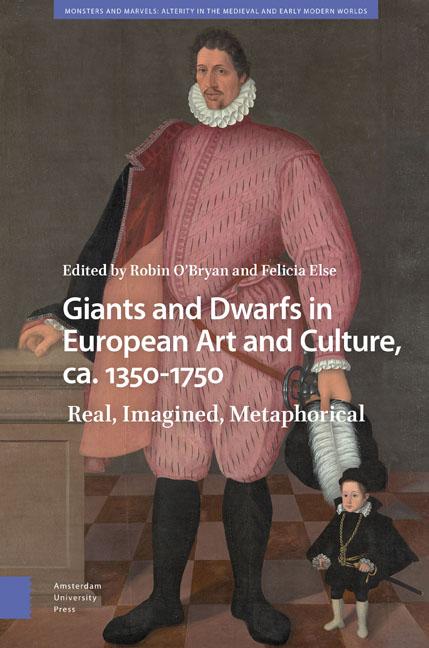6 - A Model Christian and “Child of God” : A German Court Dwarf and His Funeral Sermon
Published online by Cambridge University Press: 13 April 2024
Summary
Abstract
This essay explores the history of court dwarfs especially in the Holy Roman Empire from a social and religious point of view. It centers around Justus Bertram, a “proportionate” dwarf in the retinue of Prince-Elector Johann Sigismund of Brandenburg (1572–1619), who was considered an “ideal miniature” by his contemporaries. His case is noteworthy because of a lengthy funeral sermon the elector commissioned in print after his death. While such an honor reflects the personal esteem in which the prince held his favorite, the sermon also provides a religious perspective on dwarfs and a theological justification for their presence at court. In addition, it gives rare insights into the social background of a dwarf at the beginning of the seventeenth century.
Keywords: proportionate dwarfism, Justus Bertram, Johann Sigismund of Brandenburg, Johann Tramm, Georg Wilhelm Laubenberg, funeral sermons
As elsewhere in Europe, the popularity of court dwarfs was a widespread phenomenon among German princes of the early modern period. From the late Middle Ages until well into the eighteenth century, princes and nobles from all territories of the Holy Roman Empire surrounded themselves with dwarfs as court wonders, entertainers, and symbols of princely status. Due to the high number of courts, large and small, in the politically fragmented empire of the German nation, it can be estimated that the number of dwarfs reached at least several hundred. Many of these dwarfs can be identified in court accounts and household lists, in financial records and letters; others are represented in literature and portraiture. Among the earliest mentions of dwarfs at German courts are records from the territories of Hesse and Saxony dating from the fourteenth century. In the fifteenth century, court dwarfs began to appear in the records of most of the greater courts as well as several small and middle-sized courts, both secular and ecclesiastic. In Vienna, Prague, Munich, Dresden, and Stuttgart, among others, the so-called “chamber dwarf” became institutionalized as an official position during the sixteenth century. In these courts, dwarfs usually lived and served in close proximity to the family of the ruler, received lodging, food, clothes, and other necessities from the palace administration and were often provided with wages on a regular basis.
- Type
- Chapter
- Information
- Giants and Dwarfs in European Art and Culture, c. 1350-1750Real, Imagined, Metaphorical, pp. 211 - 238Publisher: Amsterdam University PressPrint publication year: 2024



